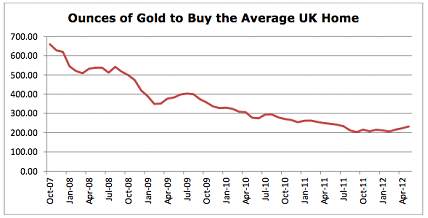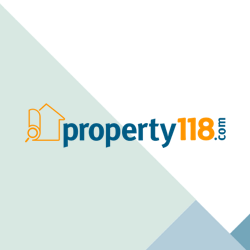

by Steve Sims
15:11 PM, 27th October 2010, About 14 years ago
Text Size
Capital allowances are mind-numbingly complicated and even confuse some accountants, but making the effort to unravel obscure tax points can save some property investors paying thousands of pounds in unnecessary tax.
This tax reducer is especially important to anyone with:
Simply put, every £1 claimed as a capital allowance saves a lower rate taxpayer 20p and a higher rate taxpayer 40p.
For an HMO that could have several thousands spent on communal areas, this could add up to a tidy tax saving.
Here’s a guide to the key points about claiming capital allowances – and some tax tips to help save money:
What are capital allowances?
Capital allowances are tax reliefs to encourage investment in the infrastructure of a business.
How do capital allowances reduce tax?
Capital allowances are deducted from the profits before tax.
Here’s a simplified example:
Amanda earns rents from letting residential property of £24,000 in the year ended 5 April 2009, and allowable expenses of £12,500.
Her capital allowances on equipment used in the maintenance of the properties come to £2,800. This can be set off against tax by a capital allowance relief called the Annual Investment Allowance (AIA).
Her rental business profit for 2009-10 after deducting AIA is £9,300 as follows:
What investment qualifies for relief as a capital allowance?
For residential property investors, the answer is very specific – the only investments that attract capital allowances are:
and
Some property investors have a van or car for their property business, plus tools and equipment like lawnmowers and ladders.
The basic rule is the equipment is not for the use of tenants, but the property owner or someone working for the property owner, like a gardener or handyman.
Capital allowances can be apportioned – that means fairly allocating any associated costs to a property business and not claiming for any private use.
For example, Amanda buys a lawnmower for £360 to keep the grass down at five rental properties and also cuts her own lawn at home.
Assuming the private use is 1/6 of the total use, 5/6 of the cost (£350/6 x 5 = £300) can be claimed as a capital allowance.
Firstly, the equipment must be in a communal area – that is somewhere with open access to any tenant sharing the HMO.
This would include shared kitchen or bathroom facilities, storage areas, hallways, stairs and landings.
Capital allowances would be claimed on fire alarms, central heating, boilers, sinks and showers etc.
Capital allowance claims have no limits, but only the first £50,000 a year in capital expenses is available for 100% first year write-off. This will drop to £25,000 in April 2012.
If the balance of your capital allowances exceeds the AIA, you can still write them down each year at rates laid down by the government in the Budget.
This means you might not get the full value of the write down in year one for those capital allowances that exceed the AIA, but the balance will simply carry forward and decrease year by year until reaching zero.
A good guide is to work out the total floor space of the property.
Deduct the floor space of the letting rooms and any private areas to arrive at the floor space of the communal area.
Work out floor space of the communal area as a percentage of the total floor space.
For example, an HMO has a total floor area of 2,500 square feet and 1,000 square feet of that is a communal area.
1,000 divided by 2,500 x 100 = 40%
Now, we can work out the percentage of the cost of installing central heating – installing and commissioning the boiler cost £3,500. Installing and commissioning the radiators and pipe work was £2,500.
The amount available to set off against profits as part of the AIA is:
£3,500 + £2,500 = £6,000 x 40% = £2,400
Yes. If you submitted a self-assessment tax return for the 2008-09 tax year and did not claim capital allowances that you believe are due for that year, you can amend your tax return up to January 31, 2011 by sending new figures and explaining why you want to make the claim.
If HMRC accepts your new figures, you’ll receive a tax refund.
If your claim dates back more than a year, you may be able to file new figures, but the procedure is more complicated and may not be allowed by your tax inspector.
No, not at all.
Business owners can decide how to calculate depreciation for their accounts.
Capital allowances are claimed at set rates determined by the government.
Depreciation is added back to profits before calculating tax, while capital allowances are deducted from profits before calculating tax.
Investors cannot claim capital allowances on furniture, fixtures or fittings in a residential letting property.
Instead either claim:
or
In either case, the original cost of the item cannot be claimed.
Whatever method is chosen must be followed consistently. It isn’t possible to swap between the wear and tear allowance and the renewals allowance from year to year.
For most property investors, wear-and-tear works out as the best claim, although this does depend on individual circumstances.
With wear-and-tear, a landlord gains 10% of net rents relief every year as a set off against profits, regardless if any equipment needs replacing.
Over time, this can work out more tax effective than a renewals allowance that is only paid when an item is replaced.
To find the ‘net rent’, deduct charges and services that would normally be borne by a tenant but are paid by the property owner, like council tax, water and sewerage rates etc.
Landlords letting leasehold flats cover many of these charges and should watch out for them when calculating their tax.
The net cost means the cost of the replacement less any amount received for trading in the old item.For instance, a landlord replaces a washing machine and receives a £50 trade-in against the £500 cost of replacement and installation.
The net cost is £500 – £50 = £450
Fixtures integral to the building are those that are not normally removed by either tenant or owner if the property is vacated or sold. For example, baths, washbasins, toilets, and central heating installations.
Expenditure on renewing such items is normally a revenue repair to the building. It is due even though the 10% wear and tear allowance has been deducted.
But a landlord cannot deduct:
or
or
The original cost of installation means either:
These reliefs cover items like:
This is not an exhaustive list – just some examples of what items to claim for against wear-and-tear allowance.
A furnished property is one that meets the living needs of tenants without them providing their own beds, chairs, tables, sofas and other furnishings, cooker etc.
Providing lamp shades, carpets, curtains and white goods in an otherwise unfurnished property does not meet this requirement.
In addition to the 10% allowance, a landlord letting furnished property can also deduct the net cost of renewing or repairing fixtures that are an integral part of the building.
Installing new windows and doors is accepted as a like-for-like replacement even if you upgrade single-glazed windows to double-glazing.
The renewals allowance is available for unfurnished property and applies to the same type of furnishings, fixtures and fittings as the wear-and-tear allowance.
For unfurnished lets, this would mainly cover white goods and soft furnishings, but also extends to boilers, central heating and other renewals or improvements.
Yes. Similar capital allowance rules apply to furnished holiday lets in the UK and overseas.
From time to time, the government offers incentive capital allowances to property owners, like the current scheme to upgrade boilers and insulation to save energy.
Property owners can manipulate the tax they pay by timing their capital spending.
If you are expecting a large property tax bill, spend the money before the end of the tax year to accumulate capital allowances to reduce your taxable amount.
If you are making a loss but think you will make a profit next year, delay the spending until after April 6 to shift the capital allowances in to the next tax year.
~
If you would like further advice on tax or accountancy please call The Money Centre’s Customer Care Team on 01603 894525 and we will be delighted to refer you to our Joint Venture Tax Partners who specialise in property taxation. The initial introduction is a no cost no obligation service.
Previous Article
Paragon opens books for more buy to let mortgages